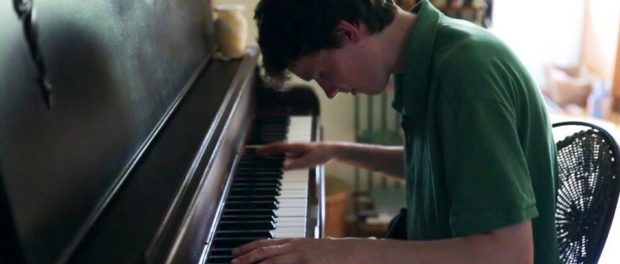Manic at the RIDM
When Kalina Bertin’s brother and sister begin to show more extreme signs of bipolar disorder, she begins a four-year investigation into the life of her late father, George Dubai. As she says, “I feel haunted by these ghosts.” George was no ordinary father. To begin, he went by many names — George, but also Shawn and others, changing his name as necessary to continue his erratic life. Fancying himself Jesus, he was the cult leader of a group of devotees known as The Significants who set themselves up in Hawaii in the ’70s. Through interviews and family footage, Bertin tries to piece together the life of an elusive man. With each discovery about her father, Bertin shows us that this complicated man who at times embodies both tenderness and evil, and whose death masks other mysteries of his life.
The film’s double narrative — the investigation of George Dubai along with the portrait of Bertin’s family’s mental health — is well juxtaposed. In brave ways, Bertin’s brother and sister, François-Sean and Félicia, give her permission to show their illnesses, something Félicia and Kalina later confirm during the RIDM’s Q&A. We see Félicia and her brother François-Sean having manic episodes, which initially sound like fairly harmless ramblings but escalate into dysfunctional, delusional psychosis. The impact on the family is openly presented. In a moving scene, Bertin’s mother tells her son that he can no longer live in the house. At the same time, we see how art plays a role in helping everyone cope. One can not help but think that Kalina’s interest in film mirrors her father’s home videos, and serves her as an outlet, while Félicia paints universes and self-portraits. The willingness of this family to share something so personal and so often treated as a taboo is a gift for the audience.

Manic. RIDM film.
As for George, his children clearly seem to regard him with more warmth than one might expect. Though it is not certain if he was bipolar, it is suggested that he may have been. His belief in the cult of his own person is the strongest evidence we are given to signs of his mental illness. In nostalgic family videos, we see him interacting with his children as they ride ponies or play in tropical locales. His former devotees speak of his charisma. As the film progresses, though, we learn of his darker side — the people he has abused, the criminal activity he did to support himself that culminates in his eventual arrest. Through the women who he had children, we hear of him as a predator who takes advantage of their naiveté and how he threatened and abused them when he didn’t get what they wanted. Most ambiguous, though, is his long-term, satellite companion who arranges for his lifestyle out of what is likely a combination of twisted love and self-deception. She is a slippery person herself, and it is left open to the viewer to decide if she is a victim or a equal perpetrator. Her daughter and Kalina’s half-sister, Margaret, proves to be another ally in the investigation, someone who also wants to find out who her family really is.
While the documentary doesn’t present new or unfamiliar evidence about either mental illness or psychopathic liars, it manages to be both a gentle and unflinching look at how both impact a particular family. Their story is moving and their resilience in the face of an impossible, inexplicable situation is a hopeful one. Their openness, tenderness and love is a gorgeous foil to how mental illness and its impacts are often presented.
The RIDM continues through November 19 and Manic showcases again on November 15 at 8:30 p.m. at the Cinematheque Quebecoise. Details HERE.
1 Comment on Manic at the RIDM
Comments are closed.







Your commentary about the movie is beautifully written. Loved it.